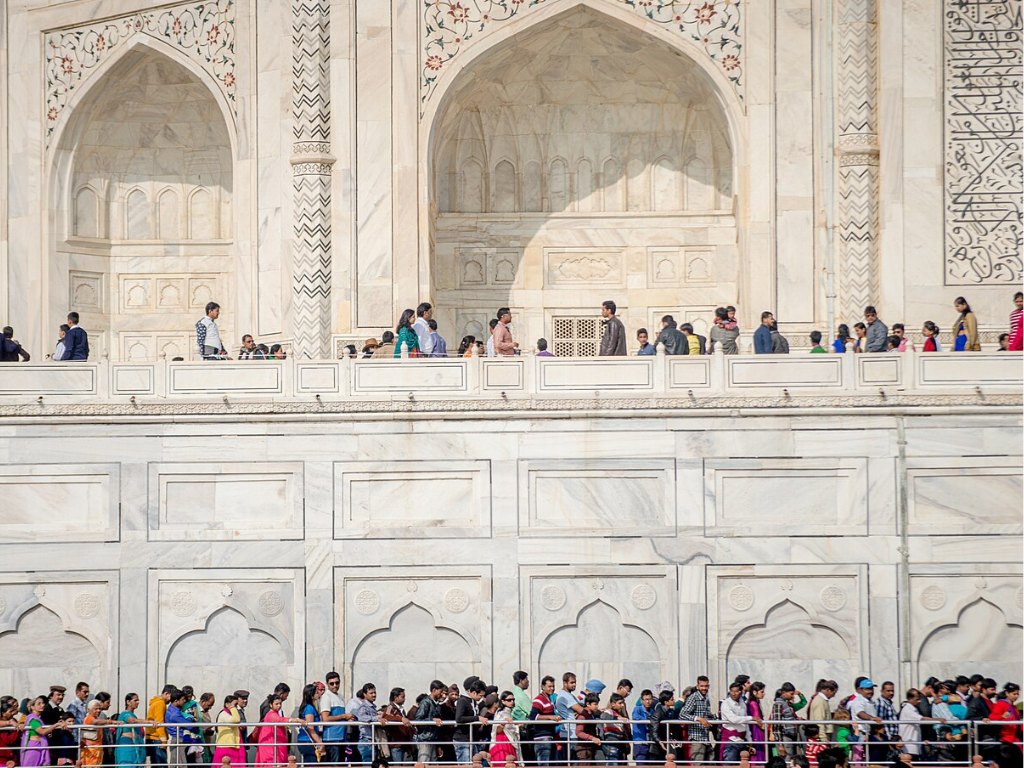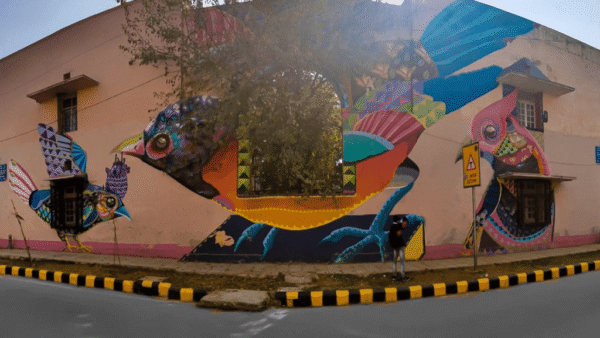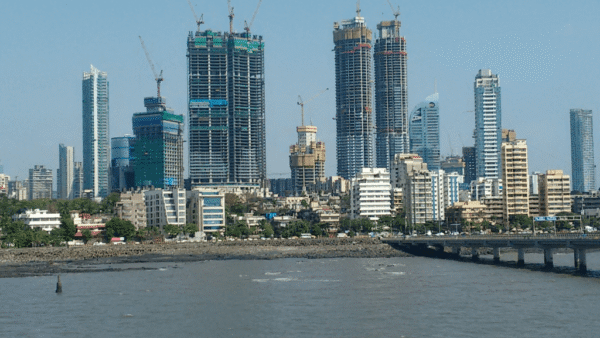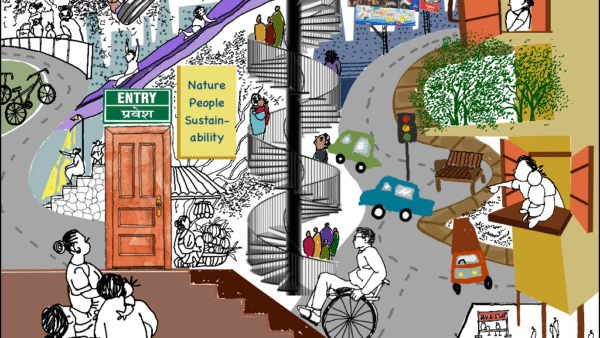One of the oldest human activities is travel. Travel for wellness, education, escape, religious and spiritual well-being, interest in different cultures and peoples, histories, for enjoyment and new experiences has appeared in many avatars over centuries. It brought tangible and intangible benefits to the visitors as well as the visited. The last half century or so has witnessed a boom in travel which established itself as an industry probably with the first organised tour by train, by Thomas Cook in 1841.[1]
The difference between pre-modern travel and modern tourism may appear obvious, but as Ning Wang (2000) highlights, from being an occasional event associated with risk, hardship and travail, modern tourism became a mass phenomenon, an “institutionalised leisure and consumer activity characterised by pleasure-seeking”.[2] He succinctly points out that “the commodification of tourism, as part of the overall commodification, is a form of social organisation and the production of experience is based on the logic of capitalist commodity production.”
In the 1960-70s, the dominant development paradigm viewed tourism as a passport to development, especially for the developing countries, an important or principal source of foreign exchange, and an effective generator of income and employment. Countries of the South have a comparative advantage of good weather, beaches, wildlife, and cultural heritage sites that attract tourists, especially from the North. In the following decades, the tourism industry grew tremendously as governments and big businesses spent large amounts to market destinations, built roads and hotels, and advertised experiences.
However, in recent times, tourism has turned into overtourism, increasingly becoming a source of discontent, deterioration, and even destruction. The word ‘overtourism’, one of the words of the year in 2018 by the Oxford Dictionary, has attracted the attention of not just people but scholars, concerned journalists, citizens’ groups, and residents. The World Tourism Organisation defines overtourism as “the negative effects” of tourism on the quality of daily life for residents and the quality of negative experiences for tourists.[3]

Photo: Wikimedia Commons
Beyond numbers
The recent boom is undeniable. In 2022, nearly 1,731 million domestic tourists travelled across India. A year later, the number was 2,509.63 million – a 45 percent rise. Foreign tourists to India reached 19.25 million, a 124 percent increase from 8.59 million in 2022, according to the Ministry of Tourism.[4] Overtourism suggests an excess number of tourists than what a tourist destination can handle though the formulas to calculate it have not been evolved.
However, it is not only numbers that matter, it is the perceptions and reactions of residents that suggest overtourism. As Philipp Wassler, a researcher at the University of Bergamo in Milano specialising in travel and tourism, wrote: “Overtourism is rarely measured scientifically and is often used as a buzzword when even a small number of locals protest or graffiti appears on walls. This can create unnecessary hostility between tourists and locals and divert attention from destinations where tourism genuinely poses a problem.”[5]
It is undeniable that tourism, after a certain point, creates negative effects on the local environment and socio-cultural fabric such as overcrowding, unchecked construction, overuse and misuse of resources, physical and cultural disregard, environmental damage, and diminishing quality of life for residents. Overtourism is a complex phenomenon requiring a nuanced analysis; if left unchecked and unregulated, it can exacerbate the problems of tourism. Residents of international cities are rising up, we may see it in India too.
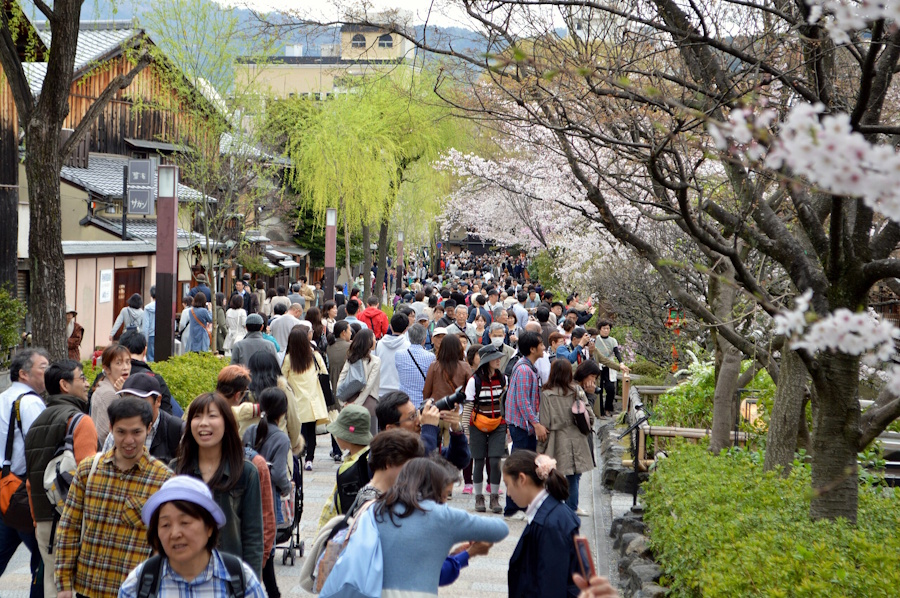
Photo: Wikimedia Commons
International spread
Recently, instances of tourists taking over a location in ‘peak seasons’ have multiplied all over the world. Cities and regions as varied as Venice, Dubrovnik, Lisbon, Kyoto, Ibiza, Mallorca, Croatia, Bavaria, Amsterdam, Barcelona, Casablanca, Thailand, Ladakh, Bhutan, Bali, Nepal, Goa and increasing number of pilgrimage sites, heritage sites, beaches, old towns, islands, mountainous regions are cracking under the weight of increasing footfalls.
In some, the simmering discontent of residents is beginning to be expressed in moderate ways; in others, anger takes the form of organised protests. Placards like ‘we don’t want you’, ‘tourists go back’, ‘go home’, or even more violent actions like attacking tourists, insulting them, and using abusive language are becoming common.[6]
If one was to generalise the sentiments, it would be “tourism, yes, but not like this.” Angelos Varvarousis, an academic and urban planner based in Barcelona and Athens, expresses it succinctly, “It’s not a matter of numbers, it’s that towns, regions, and even whole countries are turning into touristified society. Which means that their landscapes, their economies, their self-image are being operationalised to serve tourists. It’s a form of colonisation…while economic benefits that tourism brings is a matter of livelihood and even a degree of prosperity for sections of people and the country. The challenge to balance the two continues to raise its head more and more.”
Without discounting the importance of tourism, a few examples from different regions will suffice to illustrate the point about overtourism. In most instances, the opposition is not against tourism per se but overtourism. Given the huge crowds making movement time consuming and tiring, high cost of housing and consumer goods, constant noise, overflowing restaurants, huge amounts of garbage and waste has even compelled Venetians, for example, to shift to other cities.[7]
In Rome, Milan and many other cities in Italy, the rowdy, ‘anti-social behaviour’ in tourist hotspots, littered and crowded streets, increased pressure on local transport systems, high prices have frustrated residents. Remarks like “I can’t recognise my own city”, “I can’t live peacefully in my own home given the presence of tourists in the neighbourhood” are reported. The mushrooming of Airbnb and its impact on local housing has led to anti-tourist protests in several tourist destinations in Spain, including Mallorca.[8]
South and southeast Asia have also experienced negative responses to tourists. Reports from varied sources indicate annoyance and occasional hostility.[9] Bali, Japan, Bhutan, Indonesia, Malaysia, Thailand and other islands, beaches, and mountain resorts are examples. In Japan, traffic jams by tourists on Mount Fuji have been a matter of grave concern to the authorities. Cities like Kyoto and Tokyo are fast reaching their breaking points. In general, the Japanese are aghast at the rude behaviour of visitors.
Bali, in 2023, housed 5.2 million foreign tourists and a staggering 9.4 million domestic tourists. While the tourist-based economy and businesses flourished, the downside cannot be ignored. Inadequate infrastructure, proliferation of private vehicles, increasing accidents, overcrowding at tourist locations, inappropriate behaviour including objectionable dressing in temples are unacceptable to the locals. The Ministry of Tourism has acknowledged the need for better management to regulate the influx.
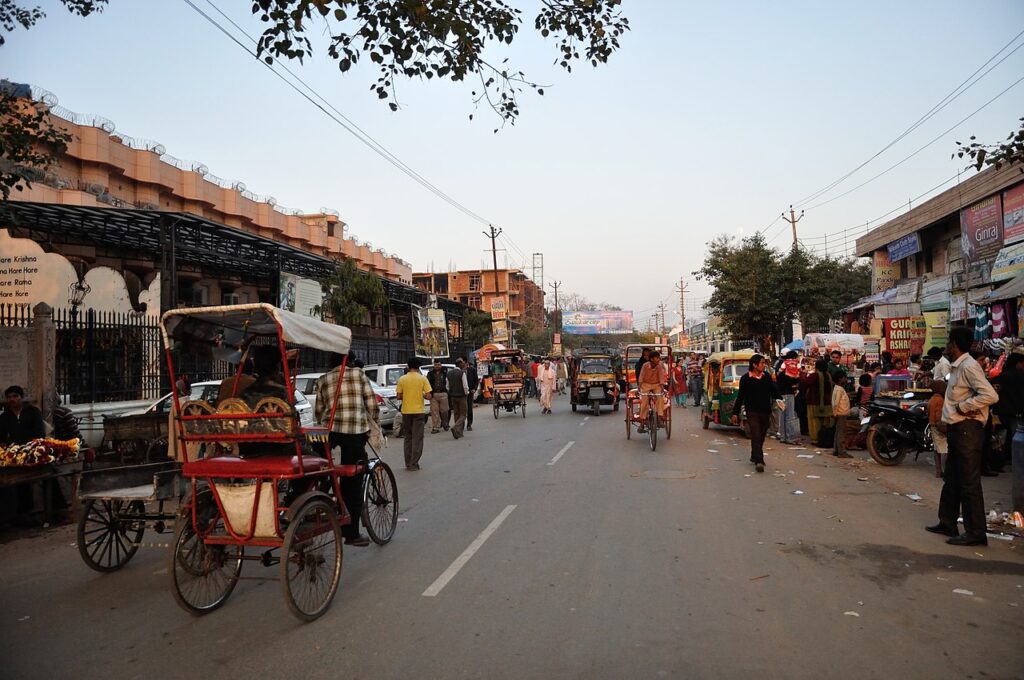
Photo: Wikimedia Commons
India’s overcrowded destinations
A closer look at Goa shows what the rapid growth of mass tourism can do to people and ecology. From October to March, visitors throng Goa as small and big businesses, owners of shops, restaurants, hotels and guest houses rake in good profits. Construction everywhere, five-star hotels dominating the skyline, beaches crowded and noisy, littered with plastic and other waste, private transport expensive and mobility difficult, main roads are crowded and noisy, huge parties with power lights and music on beaches and in resorts have become a regular feature. Destination weddings in Goa are popular.
Tourists may love this but not everyone is happy. The voices of protest from residents are becoming stronger. My research in the region in 2007-08 and subsequent visits have confirmed that plenty is wrong here. The inadequacy of government policies, intervention to regulate the tourist inflow and balance it with the needs of the residents as well as natural resources is far from accomplished. (Indra Munshi, EPW, Goa tourism, 4464-4467).[10]
A major area of contention is the increasing demand for water by hotels and resorts, supplied by the Public Works Department at the expense of the majority of Goans. Also, a large amount of sewage and wastewater has contaminated groundwater aquifers. Dongre and Potekar (2008) point out that the maintenance of gardens, swimming pools, and wasteful use of water in hotels are met by the sale of water by the government. This comes from extraction from adjoining villages. Consequently, in some villages selling water is more profitable than practicing agriculture.[11]
The long-term damage, resulting from a drop in ground water level, is alarming. The extraction continues in spite of the court order to stop over-extraction of groundwater and the Goa Ground Water Regular Act (GGWRA, 2002). Environmentalist Claude Alvares, one of the first to raise an alarm over environmental damage as a result of unchecked construction to meet the demands of the tourism industry, has outlined in his well-known book Fish, Curry and Rice: “More than 3,000 hectares of paddy fields all along the railway tracks you can see even today have been rendered into marsh.”
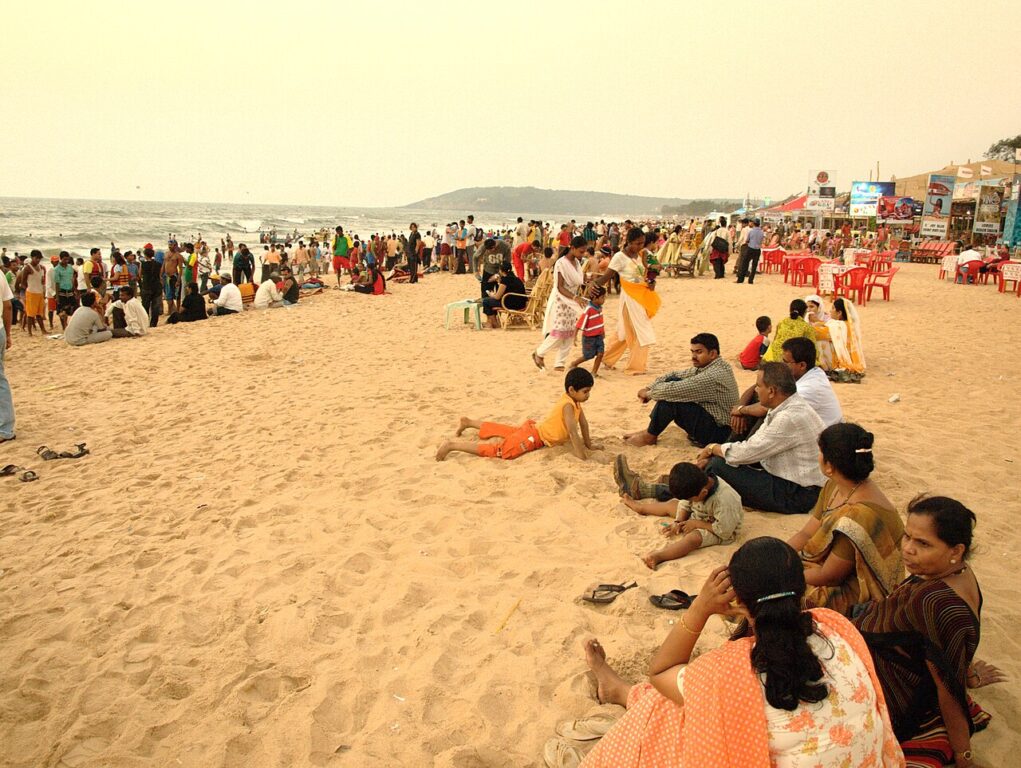
Photo: Wikimedia Commons
Religious towns and hills
Another form of tourism that has greatly increased over the last decade in India is religious tourism.[12] Given that most of these sites are on high altitude, mountains, forests, river banks, and sensitive ecological zones, the impact can be disastrous. For example, Vrindavan, along the Yamuna River, has a population of 63,005 (Census 2011), but reportedly receives six million visitors every year. Expectedly, this has led to rapid growth resulting in “deforestation, water pollution and strain on municipal infrastructure, including roads, water supply, sewage system and disposal of solid waste. These environmental problems prevail in spite of the presence of several institutions.” (Shinde, 2011:452).[13]
Hill stations from the north to south—Shimla, Mussoorie, Nainital, Dehradun, Manali, Ooty, Coorg and several others—have seen overwhelming crowds of tourists and vehicles. Wayanad, prone to weather-related disasters, likely suffered massive landslide in 2024[14] due to the massive construction to meet the tourist demand. Kerala Tourism Minister PA Md. Riyaaz stated in the legislature that Wayanad was “dealing with an influx of more people than it can handle, a classic example of a place facing the problem of overtourism.”
Novelist Amitav Ghosh has expressed his deep concern for Nicobar: “It pains me to think about how they are going to cut down this incredible primary forest to put up tourist resorts, naval bases, and so on…”[15] Kashmir, where tourism symbolises normalcy and bankrolls the economy, faces a grave threat to its fragile environment by overtourism. The tourism industry is the backbone of the local economy of Ladakh as well as the cause of significant environmental damage. At least 5,25,000 tourists visited Leh in 2023 whereas its total population is barely 31,000 people[16]. Between January 2018 and October 2020, over 4,50,000 vehicles passed through the Atal Tunnel; their fumes, local fear, contributed to faster retreating glaciers.
The Uttarakhand Disaster report, 2013, by the Ministry of Home Affairs highlighted factors such as deforestation, building of roads and tunnels through mountains, construction of hydropower facilities, tourism-related construction in floodplains and hillslopes, as well as sand mining on river beds. Despite this and the knowledge that the hill districts of Uttarakhand fall in a high seismic and landslide-prone area, mountains have been cut for road construction, putting the local residents’ lives at stake. The carrying capacity, both physical as well as ecological, has been ignored.

Photo: Wikimedia Commons
Action needed
Tourism is necessary for local economies but the time has come to assess its relative value considering the damage it poses to the local way of life and the environment. Governments, people’s groups, and communities are taking action to reduce the adverse impact of overtourism—attempting to minimise the construction of big hotels and resorts, limit the number of tourists, reduce the number of Airbnb permits, but this is largely ad hoc and grossly inadequate.
What is needed is for governments and local communities to arrive at reasonable numbers of tourists every year and cater to them without disrupting the quality of life and ecology. The efforts made to develop lesser-known tourist destinations with the involvement of local communities to make their villages and towns attractive in less destructive ways making tourism participatory and on a smaller scale, should be undertaken more effectively.
One can safely conclude that the unprecedented growth of mass tourism, or overtourism, has created huge problems which remain unaddressed. Countries, states and towns advertise themselves as welcoming and tourism literature uses the ‘guest’ and ‘host’ nomenclature. In servicing every need of a larger and larger number of guests, though beneficial for the economy, the hosts extract whatever they can from the environment and disrupt local lifestyles. Tourists too travel with a sense of entitlement and expectations.
In other words, both the visitor and the visited are ready to sell and buy the resources, both natural and cultural. In this context, the process of touristification and commodification of the place and people is at its highest. Long-term planning is needed, in fact, it is at the core of sustainable tourism in the future. While governments must impose restrictions and define boundaries, the visitors and the visited need education in responsibility and regulations, for tourism to be ethical and sustainable.
Dr Indra Munshi, is retired Professor and Head, Department of Sociology, University of Mumbai, which was set up by Sir Patrick Geddes as the first Professor and Head in 1919. She is also the executive editor of the Indian Journal of Secularism (IJS) brought out by the Centre for Study of Society and Secularism (CSSS), Mumbai. Her recent book is “Patrick Geddes’ Contribution to Sociology and Urban Planning – Vision of a City” published by Routledge – Taylor & Francis Group.
Cover photo: Tourists crowd the Taj Mahal in Agra, India. Credit: Wikimedia Commons

